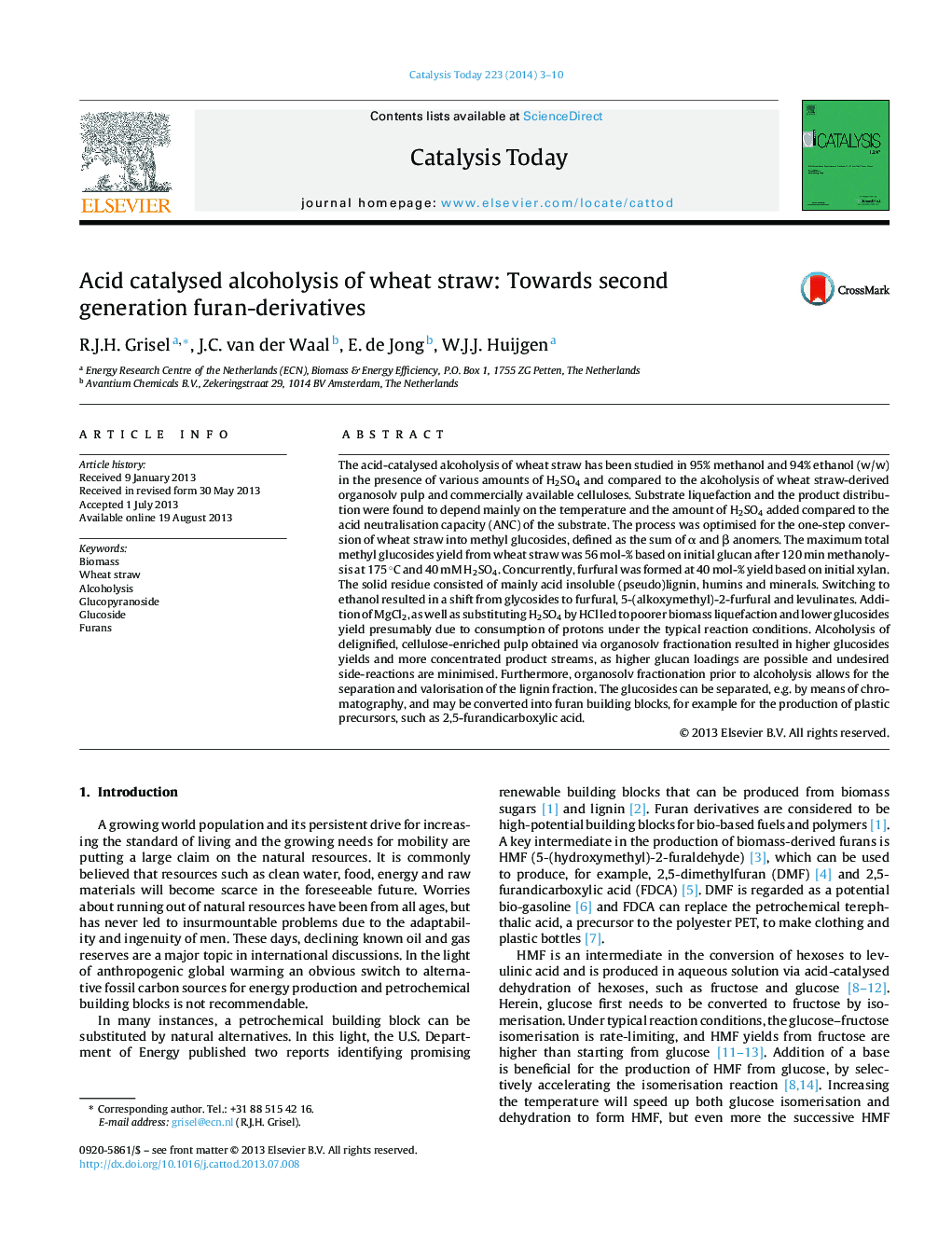| کد مقاله | کد نشریه | سال انتشار | مقاله انگلیسی | نسخه تمام متن |
|---|---|---|---|---|
| 54723 | 47024 | 2014 | 8 صفحه PDF | دانلود رایگان |
• Acid catalysed alcoholysis is a powerful tool for liquefaction of lignocellulose.
• The one-step yield of alkyl glucosides from wheat straw was optimised.
• Furfural and alkyl glucosides were the main carbohydrate-derived products.
• Over 50% of all carbohydrates was converted into either furfural or glucosides.
• Chloride is detrimental to the liquefaction and glucosides yield.
The acid-catalysed alcoholysis of wheat straw has been studied in 95% methanol and 94% ethanol (w/w) in the presence of various amounts of H2SO4 and compared to the alcoholysis of wheat straw-derived organosolv pulp and commercially available celluloses. Substrate liquefaction and the product distribution were found to depend mainly on the temperature and the amount of H2SO4 added compared to the acid neutralisation capacity (ANC) of the substrate. The process was optimised for the one-step conversion of wheat straw into methyl glucosides, defined as the sum of α and β anomers. The maximum total methyl glucosides yield from wheat straw was 56 mol-% based on initial glucan after 120 min methanolysis at 175 °C and 40 mM H2SO4. Concurrently, furfural was formed at 40 mol-% yield based on initial xylan. The solid residue consisted of mainly acid insoluble (pseudo)lignin, humins and minerals. Switching to ethanol resulted in a shift from glycosides to furfural, 5-(alkoxymethyl)-2-furfural and levulinates. Addition of MgCl2, as well as substituting H2SO4 by HCl led to poorer biomass liquefaction and lower glucosides yield presumably due to consumption of protons under the typical reaction conditions. Alcoholysis of delignified, cellulose-enriched pulp obtained via organosolv fractionation resulted in higher glucosides yields and more concentrated product streams, as higher glucan loadings are possible and undesired side-reactions are minimised. Furthermore, organosolv fractionation prior to alcoholysis allows for the separation and valorisation of the lignin fraction. The glucosides can be separated, e.g. by means of chromatography, and may be converted into furan building blocks, for example for the production of plastic precursors, such as 2,5-furandicarboxylic acid.
Figure optionsDownload high-quality image (208 K)Download as PowerPoint slide
Journal: Catalysis Today - Volume 223, 15 March 2014, Pages 3–10
